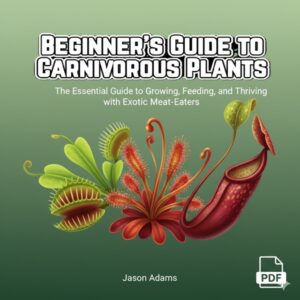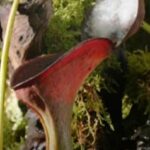As an Amazon Associate, this site earns commissions from qualifying purchases. For more details, click here.
When we think of plants, we usually picture green leaves basking in sunlight, quietly converting solar energy into food through photosynthesis. This is what makes them autotrophic—organisms that make their own food. But not all plants play by the same rules. Enter the pitcher plant, a fascinating example of a plant that bends the norms. It’s not just autotrophic—it’s partially autotrophic. But what does that really mean?
Autotrophic Basics
First, let’s break down the term.
An autotroph is an organism that produces its own food, typically through photosynthesis. This process allows plants to use sunlight, carbon dioxide, and water to create glucose—a type of sugar that fuels their growth.
Most plants are completely autotrophic. They rely solely on sunlight and nutrients absorbed from the soil. But in some environments, like bogs or nutrient-poor swamps, the soil lacks vital nutrients—especially nitrogen, which is essential for growth.
Ready to Grow Carnivorous Plants with Confidence?
Stop guessing and start thriving. Whether you’re raising flytraps, sundews, Nepenthes, or butterworts, this visual-first guide gives you everything you need — from lighting and watering to feeding and seasonal care.
- Beginner-proof diagrams
- Step-by-step routines
- Instant PDF download

Pitcher Plants: Photosynthesis Plus Hunting
Pitcher plants, like other green plants, photosynthesize. So yes—they do make their own food from sunlight. However, their habitats are often so poor in nutrients that photosynthesis alone doesn’t provide all they need. To survive, pitcher plants have evolved a clever workaround: they trap and digest insects.
Their modified leaves form deep, pitcher-shaped traps filled with liquid. Unsuspecting insects are attracted by nectar or color, fall into the trap, and are unable to escape. The plant then secretes digestive enzymes to break down the insect and absorb nutrients—especially nitrogen and phosphorus—from their bodies.
Why “Partially” Autotrophic?
Because pitcher plants still rely on photosynthesis, they are autotrophs. But since they supplement their diet by absorbing nutrients from animals, they also show behavior more common to heterotrophs (organisms that get their food from other living things).
Thus, we say they are partially autotrophic:
- Autotrophic, because they generate energy and carbon-based food from the sun.
- Heterotrophic-like, because they need to consume other organisms to meet their full nutrient requirements.
A Survival Strategy
This partial autotrophy isn’t just a quirky trait—it’s a survival strategy. It allows pitcher plants to live in places where other plants can’t survive. Rather than being limited by poor soil, they tap into an alternative nutrient source: the animal kingdom.
Conclusion
Pitcher plants blur the line between plant and predator. Their partial autotrophy is a testament to how life adapts to extreme environments in ingenious ways. These carnivorous plants still soak up the sun like their leafy cousins, but they’ve added a twist—one that involves luring, trapping, and digesting their prey. It’s photosynthesis… with a side of insects.

My fascination with carnivorous plants began many, many years ago with Venus Fly Traps. Now I am more than happy to impart what I know with other enthusiasts and those who are curious about meat eating plants.


